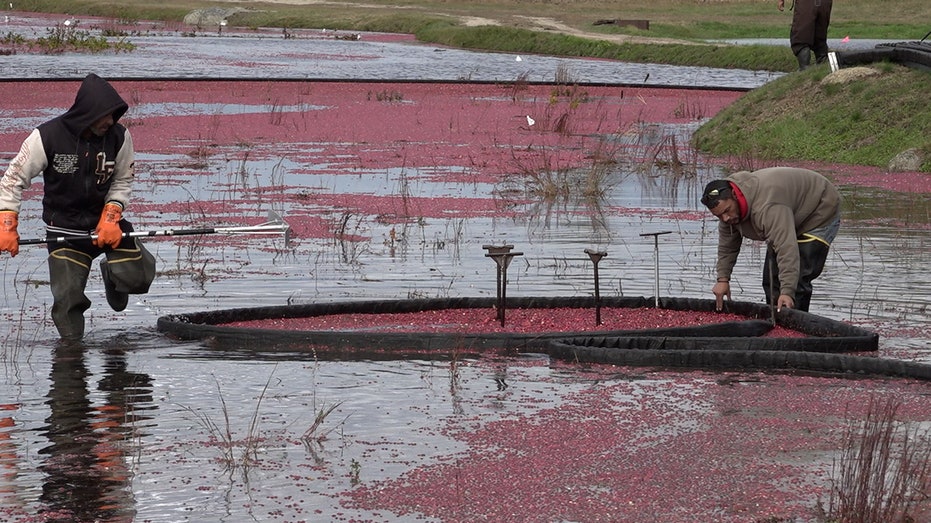URGENT UPDATE: Rising production costs are driving cranberry farmers in Massachusetts to retire their bogs, with significant implications for the local economy. As the peak season unfolds, farmers are feeling the pressure from soaring expenses, prompting some to consider selling their land.
Massachusetts is the second-largest cranberry producer in the U.S., trailing only Wisconsin. According to a 2023 economic study, the cranberry industry contributes a staggering $1.7 billion to the state’s economy and supports nearly 6,400 jobs in the region. However, ongoing challenges are reshaping this vital sector.
Jarrod Rhodes, a fourth-generation cranberry farmer in Carver, Massachusetts, produces around 50,000 barrels—equivalent to 5 million pounds—of cranberries annually on his family farm, Edgewood Bogs LLC. Founded in the early 1940s, the Rhodes family also launched Cape Cod Select in 2009 to process their fruit for the retail market. Yet, rising costs and unpredictable weather patterns are making it increasingly difficult to sustain operations.
“It kind of all adds up, and it becomes a lot more expensive to grow here versus Wisconsin or Canada,” Rhodes stated. He also highlighted that Massachusetts is inherently more expensive for farming due to high costs for labor, utilities, and real estate.
The scale of production in Wisconsin compounds the issue. “The scale in Wisconsin is significantly larger—more than double the acreage in Massachusetts—and doing anything at scale tends to make it less expensive,” said Karen Cahill, deputy executive director of the Cape Cod Cranberry Growers’ Association.
Faced with these mounting pressures, Rhodes has opted to participate in a state program that retires and restores over 30 acres of older bogs. “The property was in distress, and it needed to be rebuilt,” he explained. This initiative is run by the state’s Division of Ecological Restoration (DER), which converts retired bogs back into native wetlands.
The DER has successfully restored multiple unprofitable bogs over the past decade, including the Eel River Headwaters Restoration. The project aims to revive local ecosystems, with results already visible: Atlantic white cedar is rebounding, wetlands are flourishing, and river herring have returned upstream.
Rhodes applied for the DER program to repurpose an unprofitable bog, choosing to invest the proceeds into more productive fields. “We decided to not rebuild this but take the money and buy a better property,” he stated. While the family will farm less acreage, the retired bog will be permanently protected as wetland, marking a significant shift in their agricultural strategy.
The DER describes this approach as a “green exit strategy,” compensating families through restoration grants and conservation easements to convert bogs to wetlands. Krista Haas of DER emphasized the legal protections involved: “This places a deed restriction on the land, which restricts certain activities such as development.”
As more farmers explore similar options, the future of cranberry farming in Massachusetts hangs in the balance. Many growers are approaching retirement age, and younger generations are showing less interest in maintaining traditional farming practices.
Rhodes anticipates the wetland restoration to be completed by Spring 2026. The DER aims to restore 1,000 acres over the next 10 to 15 years, highlighting a growing trend towards sustainable land management in the region.
As the cranberry industry faces these critical challenges, the community watches closely. The decisions made today will shape the landscape of Massachusetts’ cranberry farming for years to come.
Stay tuned for further updates on this developing story.
